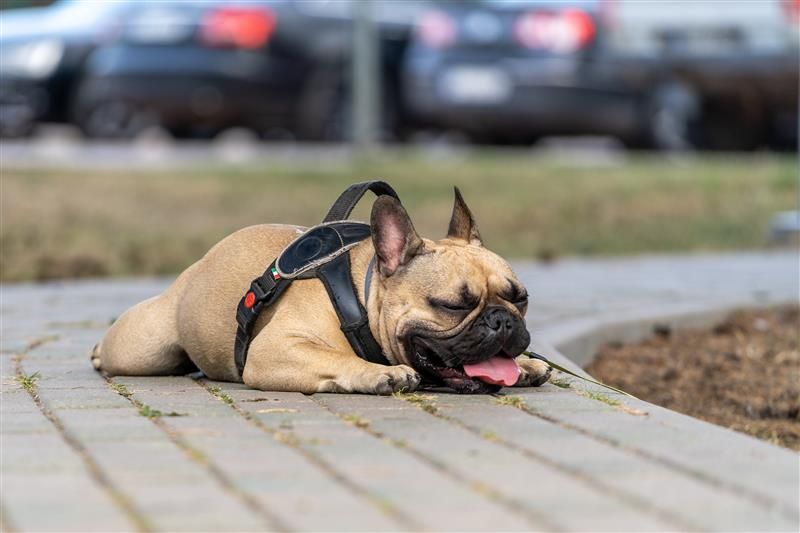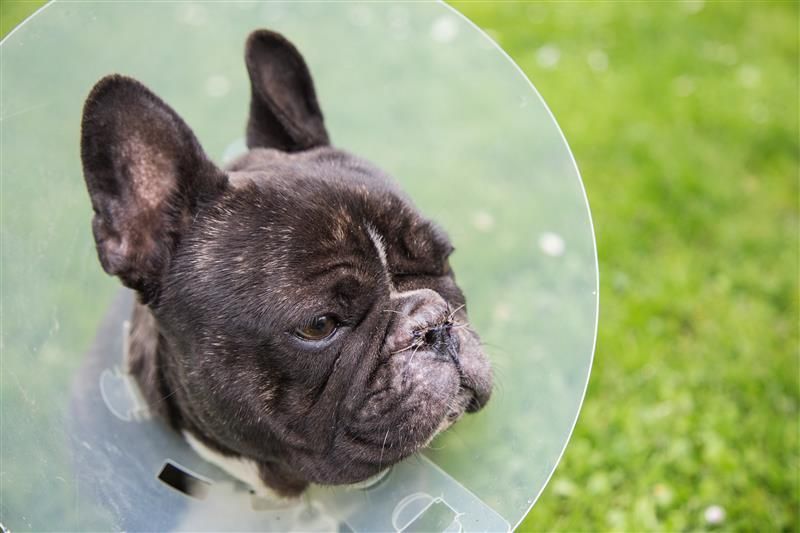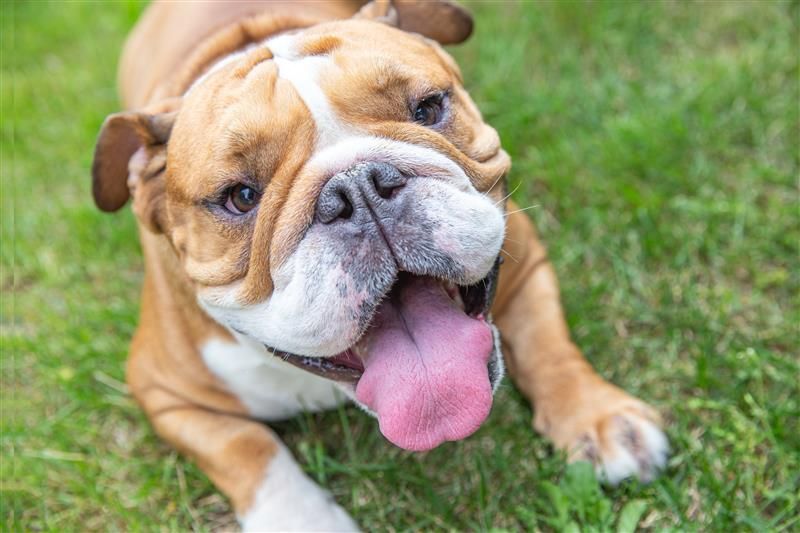Brachycephalic Obstructive Airway Syndrome Explained
Brachycephalic obstructive airway syndrome (or BOAS) is a chronic respiratory condition that affects brachycephalic dog breeds.
Although some affected dogs’ symptoms can be managed, most require surgical correction to prevent serious and even life-threatening breathing issues from developing as they age.
In this blog, we’ll explain exactly what BOAS is, why an early diagnosis is important, and how
BOAS surgery can help your dog breathe better almost immediately!
Worried about your dog’s breathing? Call Sydney Bulldog Clinic on (02) 8811 4604 to book a BOAS consultation today!
What Is Brachycephalic Airway Syndrome?
Brachycephalic airway syndrome (BOAS) is a condition that affects dogs with flat faces (i.e., the “pushed in” look created by decades of selective breeding).
Unfortunately, this has led to significant health issues, notably complex breathing difficulties, in breeds with this appearance.
The main anatomical abnormalities caused by
brachycephalic syndrome in dogs are:
- Stenotic nares - Narrow or partially closed nostrils that limit the amount of air a dog can take in through the nose.
- Elongated soft palate - Excess tissue at the back of the mouth that is longer than it should be and flaps into the airway, partially blocking airflow to the windpipe and lungs.
- Everted laryngeal saccules - Small pockets of soft tissue pulled inside out, protruding into the airway and worsening the obstruction.
- Hypoplastic trachea - A narrow windpipe that makes breathing less efficient (i.e., like trying to draw air through a straw).
- Laryngeal collapse - Cartilage that supports the larynx (voice box) is weakened by the strain of breathing, leading to collapse and blocking the airway.
- Chronic airway inflammation – Constant effort to draw in air can cause swelling and irritation, further narrowing the passages and adding to the cycle of breathing difficulty.

What Are the Signs of BOAS in Dogs?
Common BOAS symptoms in dogs include:
- Noisy breathing
- Laboured breathing
- Rapid breathing
- Loud snoring or snorting
- Excessive drooling
- Gagging while eating
- Regurgitating after eating
- Vomiting
- Reverse sneezing
- Overheating
- Exercise intolerance
- Exhaustion
- Fainting or collapse
- Sleep apnoea
- Sleeping sitting up
- Bluish discolouration of the gums, tongue or lips
Why Early Intervention Matters
Catching brachycephalic obstructive airway syndrome in dogs early goes a long way towards improving their breathing and quality of life, as well as preventing worsening of symptoms.
Constantly struggling or gasping for air is as stressful and debilitating for dogs as it is for humans. Recognising it whilst they are still young will help stop it getting worse as they get older, and reduce the risk of them developing secondary problems like pneumonia or gastrointestinal disease.
So, at what age should BOAS surgery be performed? If done at around 12 months of age, surgery offers a 90% chance of moderate to significant improvement. Although it is not considered a “cure”, it will substantially increase airflow and minimise the stress and strain on your dog’s respiratory system.
Getting a Diagnosis
BOAS in dogs is typically diagnosed according to your dog's breed and medical history, clinical signs, and the results of a thorough physical examination.
A veterinarian will be able to identify stenotic nares pretty easily, but an elongated soft palate or everted laryngeal saccules at the back of the mouth will need sedation or general anesthesia to inspect.
Some dogs with brachycephalic syndrome don’t go well under anaesthetic, so your vet might recommend blood work, CT scans and X-rays first to check your dog’s general health. If your dog has a general anesthesia to diagnose BOAS, it might be best to get the corrective surgery done at the same time.
What Does BOAS Surgery Involve?
BOAS surgery is designed to make breathing easier and reduce the health risks caused by narrowed airways. Each dog is different, but most procedures include a combination of the following 5 steps:
- Widening the nostrils – Opening up the nasal passages so air can flow more freely.
- Reshaping the soft palate – Trimming (shortening and thinning) excess tissue at the back of the throat that can block the airway.
- Removing obstructive tissue – Clearing tissue from the larynx or nasal cavity if it is restricting airflow.
- Taking out laryngeal saccules – If these small pockets have flipped inside out and are blocking breathing, they will be removed.
- Tonsil removal – Enlarged tonsils may be taken out if they are contributing to airway obstruction.
Recovery Timeline and Expectations
Bulldog airway surgery recovery starts with a brief hospital stay to ensure there are no complications. Your dog should start to breathe better within the first 24-48 hours post-surgery; however, if they sound nosier than usual during this time, there’s no reason to be alarmed. There’s always some inflammation around the surgical sites that needs to heal.
Most dogs get back to their normal selves within 2-3 weeks, but it can take up to 6 weeks to be fully recovered. During this time, you should monitor their activity, attend follow-up appointments, and follow any dietary or medication instructions from your vet.
Your dog will require plenty of rest, should be restricted to very low-impact exercise, and can only eat soft meals to start (4-5 days after surgery, a normal diet can be slowly reintroduced).

Get Trusted Brachycephalic Care at Sydney Bulldog Clinic
Brachycephalic airway syndrome in dogs doesn’t have to be a lifelong affliction.
Here at Sydney Bulldog Clinic, our highly experienced Sydney vet team uses advanced tools and technology to accurately diagnose and treat bulldog breathing problems like BOAS.
Our clinics are sterile and stress-free environments where your best friend is kept calm and well looked after before, during, and after corrective surgery, and we always keep you – the owner – informed every step of the way.
If your dog’s breathing is affecting their quality of life, it’s time to consider surgical intervention. Call us or email the clinic closest to you to organise a breathing assessment.
FAQs
Which Breeds Are Most Affected by BOAS?
BOAS-affected breeds include French Bulldogs, British Bulldogs, Australian Bulldogs, Boston Terriers, Boxers, Pugs, Shih Tzus, Cavoodles, Cavalier King Charles Spaniels, Mastiffs, Pekingese, and Lhasa Apsos.
When Should I Worry About My Dog’s Breathing?
If your dog is showing signs of respiratory distress (i.e., struggling to breathe or eat, making unusual noises when breathing or sleeping), you should consult a vet straight away.
Does My Bulldog Need BOAS Surgery?
If your bulldog’s breathing is abnormal, and a vet has determined they have a chronic case of BOAS, surgery is the best way to get both immediate and long-term relief.
Are There Non-Surgical Treatments for BOAS?
Yes, but they are only effective on dogs with a mild form of BOAS. Treatment options include keeping your dog at a healthy weight, not overdoing exercise, avoiding taking them out in hot or humid weather, and using a harness instead of a collar. Medications can also be prescribed to manage symptoms, but only in the short term.



